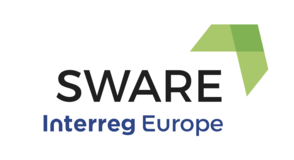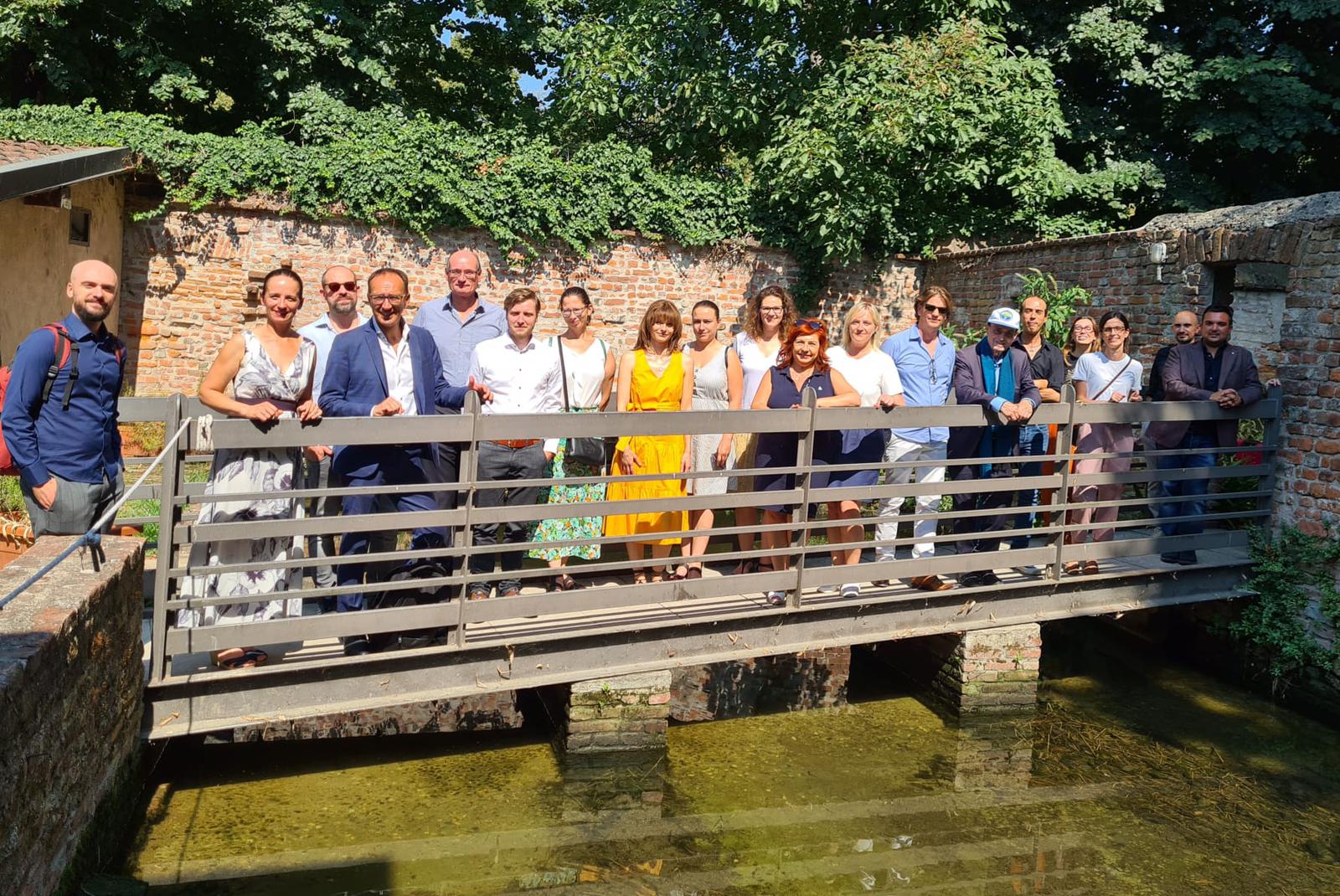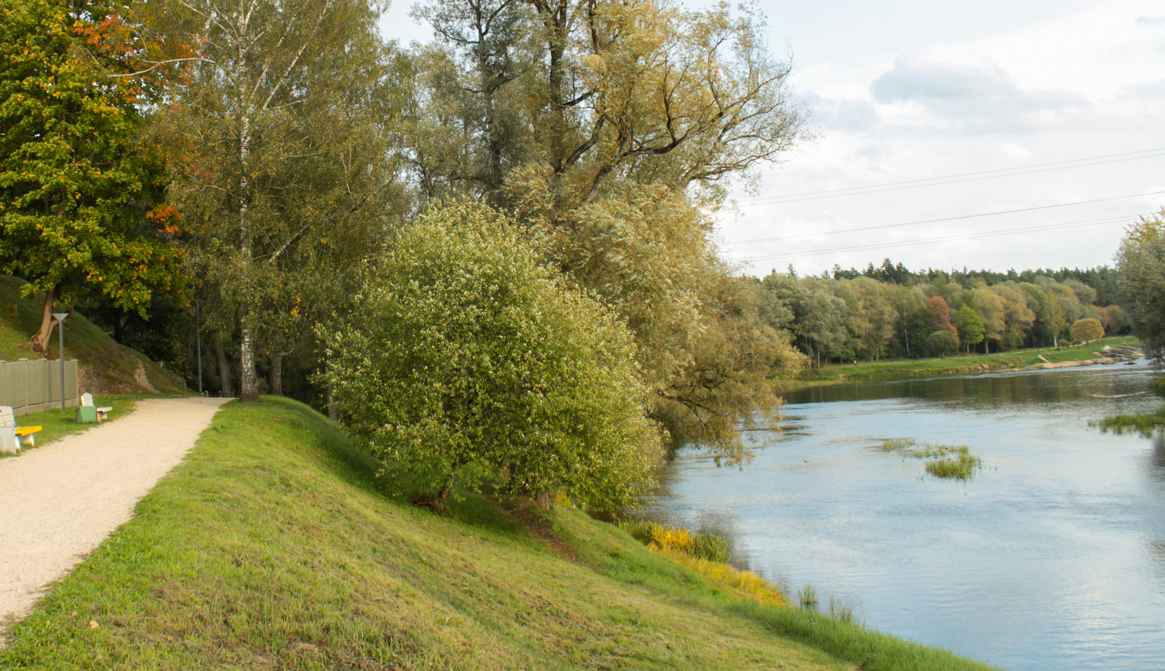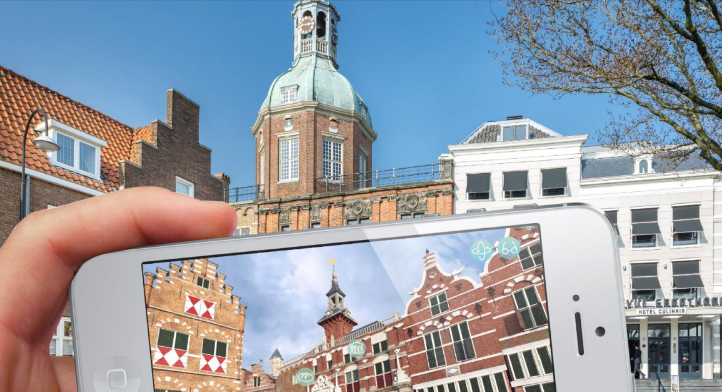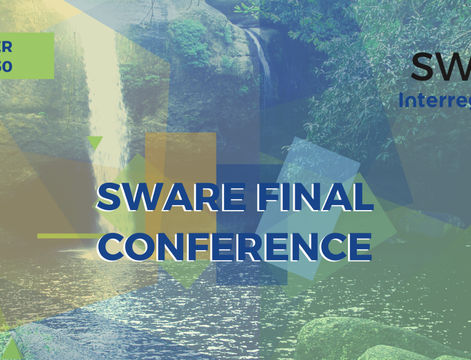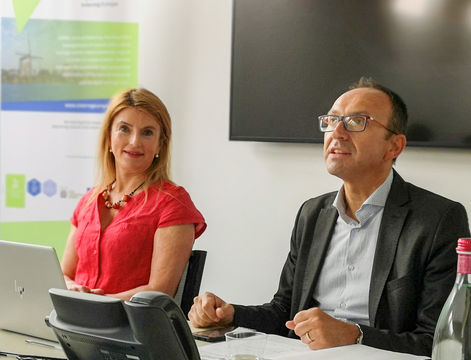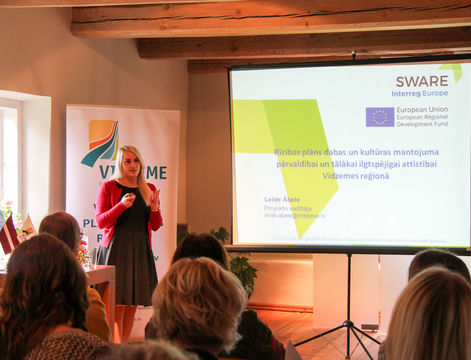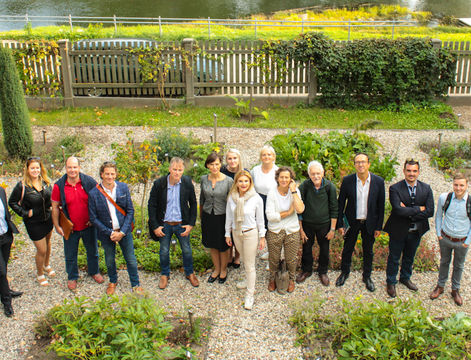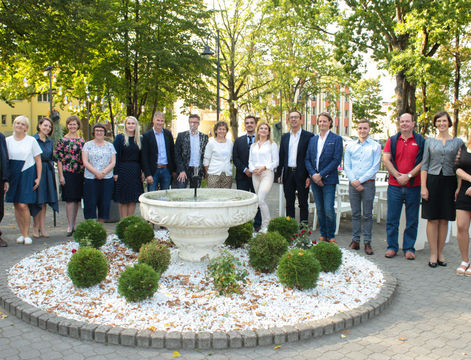Third meeting of the Stakeholder and Institutional learning Group (SIG) took place in Burtnieki, Latvia. During the meeting Vidzeme Planning Region introduced the progress of the SWARE project and the good governance, tourism and heritage infrastructure and marketing/publicity examples from Ireland, Italy and the Netherlands. A discussion was also held with readings about the importance of landscape regarding the protection of cultural and natural heritage.
A biologist and an expert of the Latvian Fund for Nature Viesturs Lārmanis introduced with exceptional natural values in the middle course of the Gauja River: rare meadows, silverwillow stands etc. The examples suggested to think about the biological diversity and it’s importance on the banks of inland waterways, about the possible exploitation for tourism and local community.
A geographer and a professor of the University of Latvia Oļģerts Nikodemus using several examples presented the main aspects of planning waterside landscape. The professor turned attention to issues not only about the functionality of waterside, but also to preserving natural and cultural heritage. For an effective planning the inventory of waterside and identification of heritage objects and values must be undertaken – on the banks of rivers and lakes it is essential to gather information on habitats, but also old routes, historical landuse, places etc. The professor also spoke about such issues as visual quality, reach, visibility, “opening” and maintaining a lanscape, since in Latvia waterside is often overgrown and not visible enough in the landscape. Attended and maintained landscape creates and increases the value of a place.

In the closing part of the meeting a topology expert Jānis Ķīnasts suggested to think about various topics of environmental topology and future consequences of the present acticities, People leave traces in both ecology and landscape, therefore it is important to think in a wider context, recognizing, that landscape is an endless network of certain objects, and that network is created by people themselves.
The third SIG meeting in Burtnieki promoted knowledge exchange and suggested thinking about importance of landscapes and locations. The preservation of both depends on every person’s actions and good practices. The acquired information and experience will help to develop recommendations for improvement of policy documents to create better balance between protection and sustainable exploitation of natural and cultural heritage.
The overall objective of the SWARE project is to foster integrated management of natural and cultural heritage within inland waterway regions by improving the partner regions’ related policy instruments in order to create a better balance between the protection and sustainable exploitation of the natural resources and the built heritage sites. Project SWARE is implemented with the support of European Regional Development Fund and Interreg Europe Programme 2014-2020. This publication reflects the author's views only and the Interreg Europe programme authorities are not liable for any use that may be made of the information contained therein.
